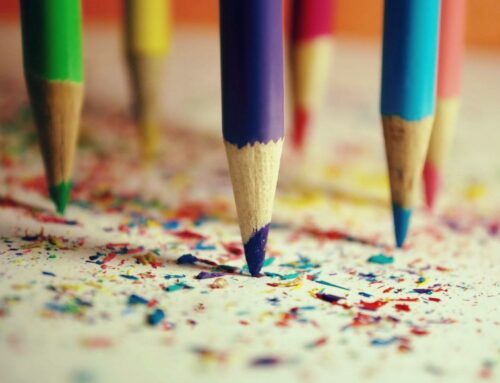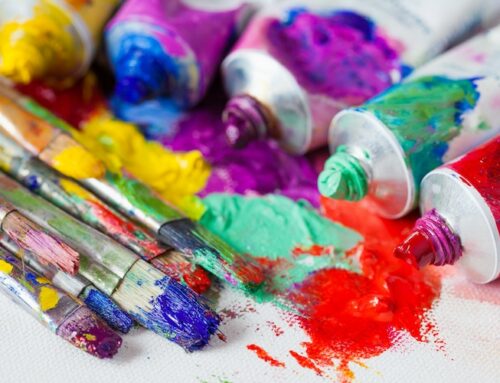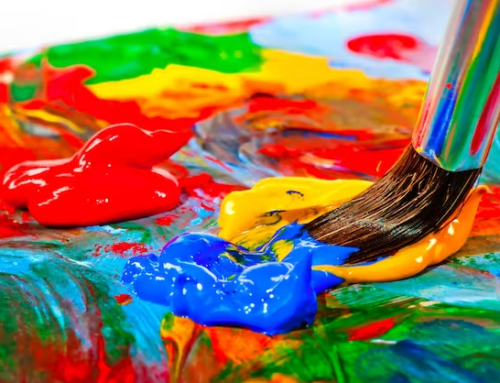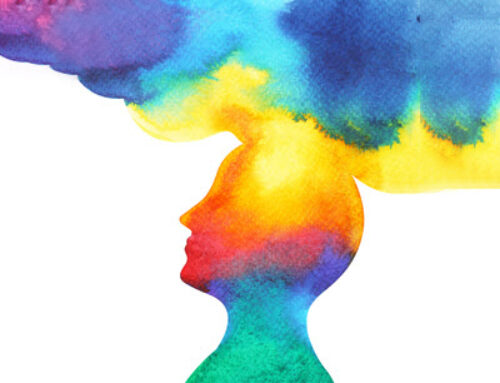
Autism and the Importance of Art
Art has always been a form of expression that allows individuals to convey their emotions, feelings, and perspectives in a creative and individualized way. For autistic children, this mode of expression can be particularly powerful. I often find that for parents of autistic children, it can be difficult to find activities that not only stimulate their child’s mind, but also provide a sense of calm, relaxation, focus, and voice needed for important social and emotional development: leading to frustration, anxiety, and isolation for both parents and children. In this blog post, we will explore how studying art can be beneficial for the overall health of an autistic child.
Self-Expression and Voice
Art provides a safe and nonverbal way for children with autism to express their emotions and give voice to their ideas and feelings. It provides a means of communication that is less reliant on verbal language and can be understood by others without the need for explanation or interpretation. For example, a child may use bright colors and bold brushstrokes to represent feelings of excitement or use dark colors and jagged lines to represent feelings of anger: communicating in a visual way, using color, texture, and form to express what may be difficult to put into words..
Additionally, art provides a safe space for children with autism to express themselves without fear of judgment. The act of creating art is a personal and introspective experience that allows children to explore their emotions without feeling vulnerable or exposed. This can be particularly helpful for children who struggle with anxiety or social anxiety.
Enhances Motor Skills
Many autistic children struggle with fine motor skills (the ability to use the small muscles in the hands and fingers to perform precise movements), which can make everyday tasks like writing, buttoning clothes, and basic self-care difficult. These skills are crucial for everyday tasks such as writing, cutting, tying shoelaces, and using utensils.
Studying art can help improve fine motor skills in a fun and engaging way. Art requires precise hand movements and coordination, such as holding a brush or pencil, using scissors to cut paper, or manipulating clay. These activities can help develop the small muscles in the hands and fingers and improve dexterity and control. The repetitive nature of art-making can also help children with autism develop their fine motor skills. For example, coloring or tracing shapes can help children develop the hand-eye coordination needed for writing, while threading beads can help improve finger dexterity and pincer grip.
Art can be a fun way to practice these skills without feeling like you are doing work. Children with autism may struggle with tasks that feel like work or have a specific goal, but art can provide a more open-ended and enjoyable activity; reducing stress and frustration and making it more likely that they will want to continue practicing these skills often and independently.
Reduce Stress and Anxiety and Boost Confidence
Creating art has been shown to have a calming effect on the brain, which can be particularly helpful for children with autism who may experience higher levels of stress and anxiety. The process of engaging in art-making can be a form of meditation, as it requires focus, attention, and concentration. This meditative state can help regulate emotions, reduce stress, and improve mood.
Additionally, the finished product can provide a sense of accomplishment and pride, which can further boost self-esteem and confidence. For children with autism, who may struggle with social communication or experience difficulty with academic tasks, the act of creating something can be a powerful way to build self-esteem and self-worth. Seeing their art displayed or receiving praise from others can provide a sense of validation and recognition for their unique talents and abilities.
Furthermore, the act of engaging in art-making can provide a sense of control and predictability, which can be particularly helpful for children with autism who may feel overwhelmed by unpredictability or uncertainty in their lives. Art can provide a structured and predictable activity that allows children to express themselves in a safe and controlled way, which can be very reassuring for them.
Improves Focus and Attention
Studying art can help improve attention span by requiring sustained focus on a single task. When creating art, children with autism need to concentrate on the materials they are using, the colors they are mixing, the shapes they are drawing, and so on. This sustained focus can help train their brain to pay attention for longer periods of time, which can translate into other areas of life, such as schoolwork or hobbies.
Art-making can be a highly engaging and enjoyable activity, which can help motivate children with autism to sustain their attention for longer periods of time. When children are engaged in an activity that they find interesting and enjoyable, they are more likely to maintain their focus and stay on task.
Finally, Creating art in a low-pressure environment where mistakes are allowed, and there is no one right answer can help children with autism develop a growth mindset – further improving their ability to focus and stay on task. When a child understands that making mistakes is a natural part of the learning process, they may be more willing to try new things and persist in the face of challenges.






Leave A Comment